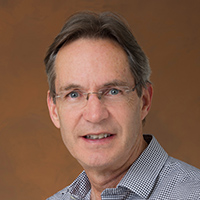Pickering Awards Lecture 19 August 2019 1630 - 1730
One of NASA's most remarkable interplanetary missions, the Dawn spacecraft used ion propulsion to orbit and explore the two largest uncharted worlds in the inner solar system, dwarf planet Ceres in 2015-2018 and protoplanet Vesta in 2011-2012. Dawn is the only spacecraft ever to orbit a body in the main asteroid belt, the only spacecraft to orbit a dwarf planet, and the only spacecraft to orbit two extraterrestrial destinations. Dawn's mission would have been impossible without its xenon-fueled ion propulsion system, which ultimately provided a total effective velocity change of 11.5 km/s (25,700 miles per hour) -- comparable to that provided by the entire three-stage Delta II launch vehicle that started the spacecraft on its deep-space journey.
Ion propulsion is a type of space electric propulsion, a technology that has now been used on nearly 600 spacecraft. Over 40% of commercial geosynchronous satellites launched in recent years rely on the extraordinary capability of this technology. Eight deep-space exploration missions with electric propulsion have been launched and yet we have just scratched the surface of what electric propulsion can do. Under development in 20 countries around the world, electric propulsion will continue to see widespread use on commercial communication satellites with likely prolific use in large constellations in low altitude orbits. It will be used for exciting new deep space robotic science missions. Higher power versions are expected to benefit all forms of planetary defense techniques, human missions to Mars, and asteroid mining, and advanced versions will ultimately enable rapid transportation throughout the solar system.The Pickering Lecture will describe this extraordinary space propulsion technology and how Dawn and other missions take advantage of it to accomplish amazing interplanetary adventures. Download the flyer.
Speakers
-
 John Brophy
Expert in Space Electric Propulsion, JPL Fellow
John Brophy
Expert in Space Electric Propulsion, JPL Fellow -
 Marc Rayman
Dawn Mission Director, JPL Chief Engineer for Operations and Science, JPL Fellow
Marc Rayman
Dawn Mission Director, JPL Chief Engineer for Operations and Science, JPL Fellow
